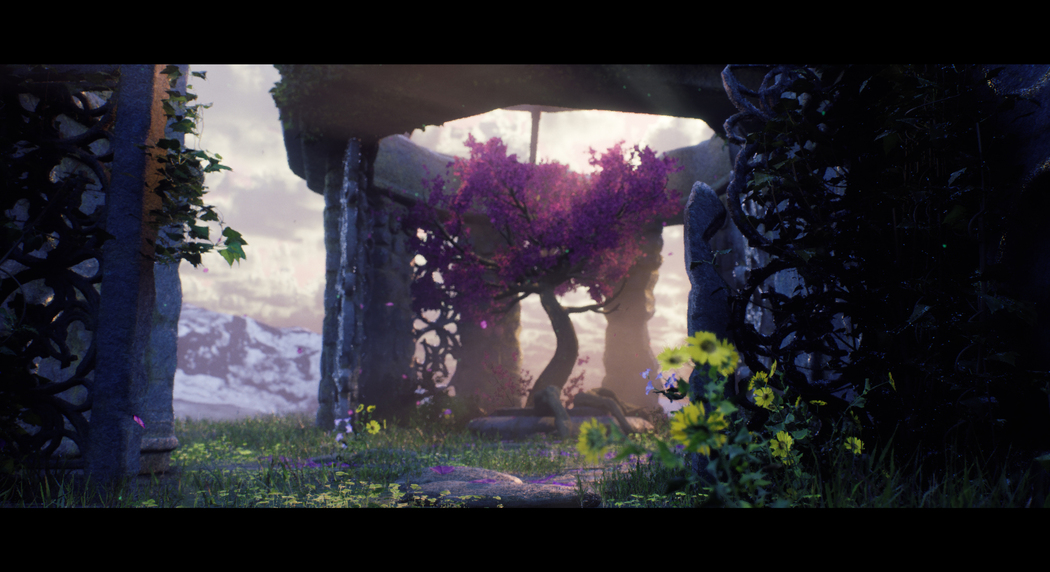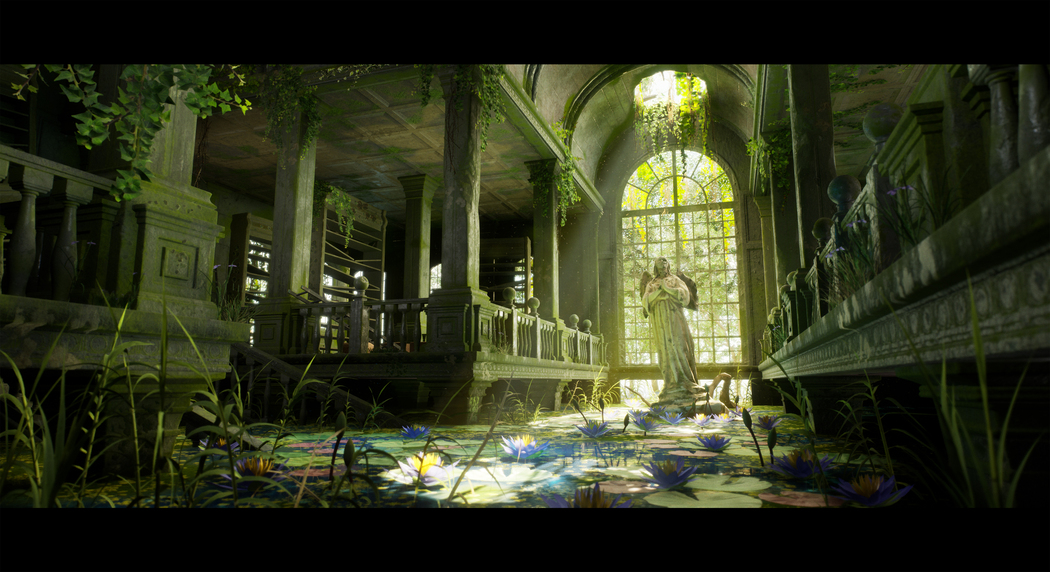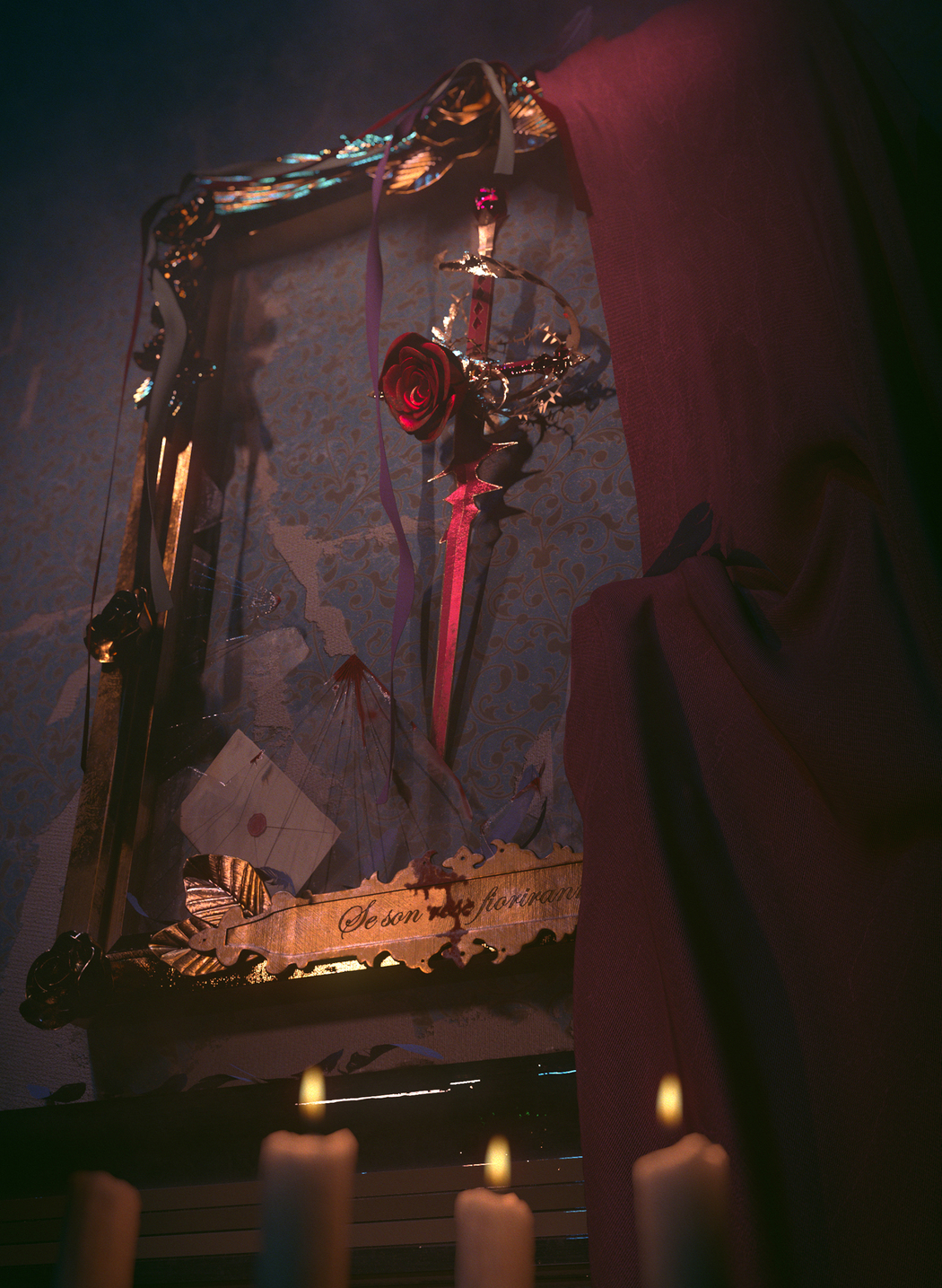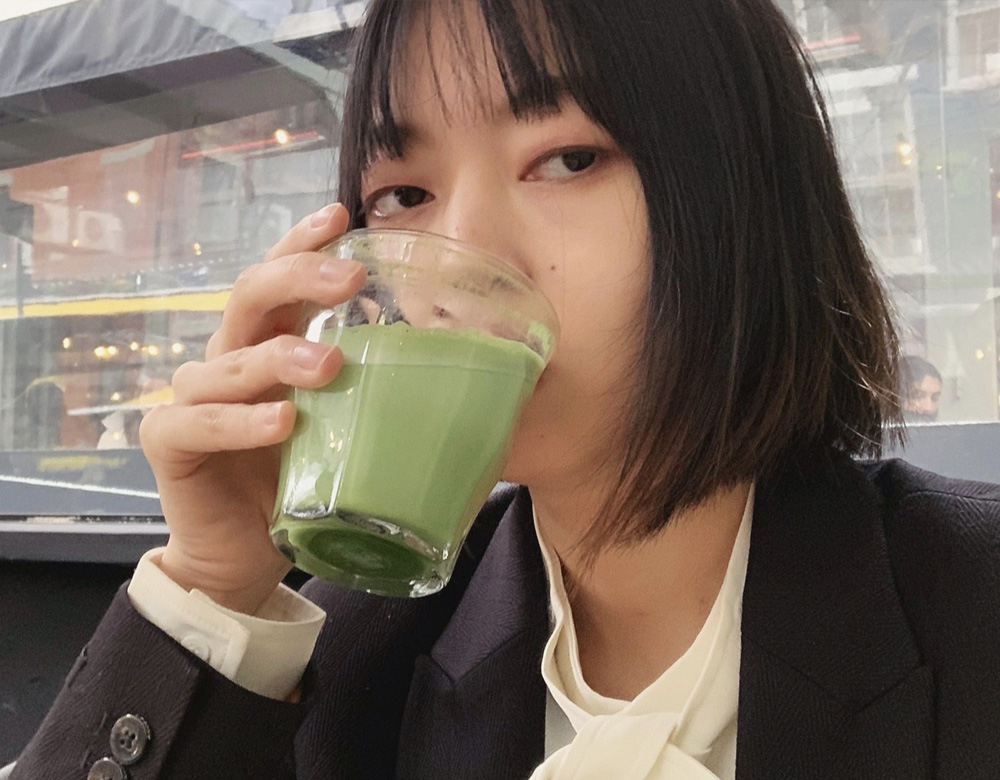Joyce Jiao
Year of birth: 1996/06/23.
Where do you live: Previously in Los Angeles now in Seattle.
Your education: Bachelor of Fine Art (SAIC), and Certificated Degree in Digital Production (Gnomon).
Describe your art in three words: Impressive, ethereal, beautiful.
Your discipline: Always create art that can stay in people’s memories like it’s the last days of your life.
Website | Instagram
Your work often incorporates themes of surrealism and architectural preservation. What first inspired you to explore these areas in your art?
Growing up, I was always drawn to exploring spaces that could evoke emotions and create lasting memories. These spaces ranged from the narrow piano practice room I frequented at the Youth Center to the well-worn path I took to school each day, even extending to everyday places like bathrooms at home or school. I came to deeply value these experiences and the feelings each space instilled in me. This sensitivity to atmosphere and memory informs my work today—I believe that a truly impactful, environment-focused artwork should resonate with its audience, inviting them to feel and even imagine themselves within it.
Can you share how your experience at York University, the School of the Art Institute of Chicago, and Gnomon has shaped your artistic journey?
At York University, I pursued a double major in Visual Art and Art History, where my Freshman Art History classes profoundly impacted me. These courses taught me to interpret and analyze art from both traditional and unconventional perspectives, expanding how I thought about and engaged with visual storytelling. However, I soon felt the desire and urge to further immerse myself, leading me to transfer to the School of the Art Institute of Chicago. There, I was able to focus more intensively on fine arts within an environment that fostered exploration and experimentation in various mediums and techniques, strengthening my foundation as an artist. During my time at the SAIC, I was able to explore my interest on both Architecture Design and Cinematic Studies.
 Joyce Jiao | Into the Garden | 2023
Joyce Jiao | Into the Garden | 2023
You mentioned the impact of the Notre Dame fire on your perspective about digital preservation. How do you see the role of digital artists in safeguarding cultural heritage?
When the Notre Dame fire happened, it really struck me that many historical sites are at risk of disappearing, whether from natural events or human impact. As digital artists, we have this unique chance to preserve these places by capturing them in virtual form. By recreating them digitally, we can make sure that future generations get to experience and appreciate their beauty and significance, even if the originals might fade or change over time. I think sharing these digital spaces not only keeps history alive but also makes it accessible to people everywhere, in a way that’s meaningful and lasting.
In your work, there’s a recurring theme called the “dream of gold.” What does this concept mean to you, and how do you express it through your art?
In my CG work, which is often focused on spaces and environments, the concept of the “dream of gold” represents a special feeling or moment I strive to bring to life. It’s like when a photographer sees a perfect sunset and feels compelled to capture that fleeting beauty—the ‘golden hour’ unfolding right before their eyes. For me, being a good CG environment artist means being able to create these immersive, golden moments from scratch, moments that draw people in and make them want to experience the space. Through lighting, composition, and staging, I work to craft that ‘dream of gold’ feeling, creating scenes that resonate deeply and stay with the audience.
 Joyce Jiao | Flooded Library, Midsummer Day | 2023
Joyce Jiao | Flooded Library, Midsummer Day | 2023
How do you approach balancing technical skill with emotional expression in your work, especially when creating immersive environments?
For me, the quality of a project always comes first, especially with non-traditional computer-generated art where technical precision plays a big role in defining the strength of the piece. Solid technical skills allow me to bring out the emotions I want to convey in a way that’s both effective and impactful. When creating immersive environments, technical expertise enables me to shape a space that doesn’t just look impressive but also resonates emotionally, making the experience feel real and memorable for the audience.
Could you describe a project that you found particularly meaningful, and why it stands out to you?
For me, this project has to be the one called “Se Son Rose Fioriranno”. This was the first high-quality still-life rendering I completed as a CG artist, and it holds a special place in my journey. The title itself—Se Son Rose Fioriranno, an Italian phrase I stumbled upon—connected instantly with a beloved short novel by William Saroyan, *Knife-Like, Flower-Like, Like Nothing At All in the World.* I love the feminine grace and delicate mystery in these words, and I wanted to weave that same feeling into my own art. The result was a quiet, intimate scene: a bokeh rose sword framed on the wall, capturing a serene, contemplative moment.
 Joyce Jiao | Se Son Rose Fioriranno | 2022
Joyce Jiao | Se Son Rose Fioriranno | 2022
How do you keep your skills and creative approach evolving, considering the rapid advancements in 3D art and digital technology?
Keeping up with the rapid changes in 3D art and digital technology can be challenging, but I make it a priority to stay updated on industry news and advancements, even during times when I’m not actively creating. I believe that constantly reading, observing, and staying informed helps me stay connected to the latest techniques and trends, allowing my skills and creative approach to evolve with the field.


Leave a Reply